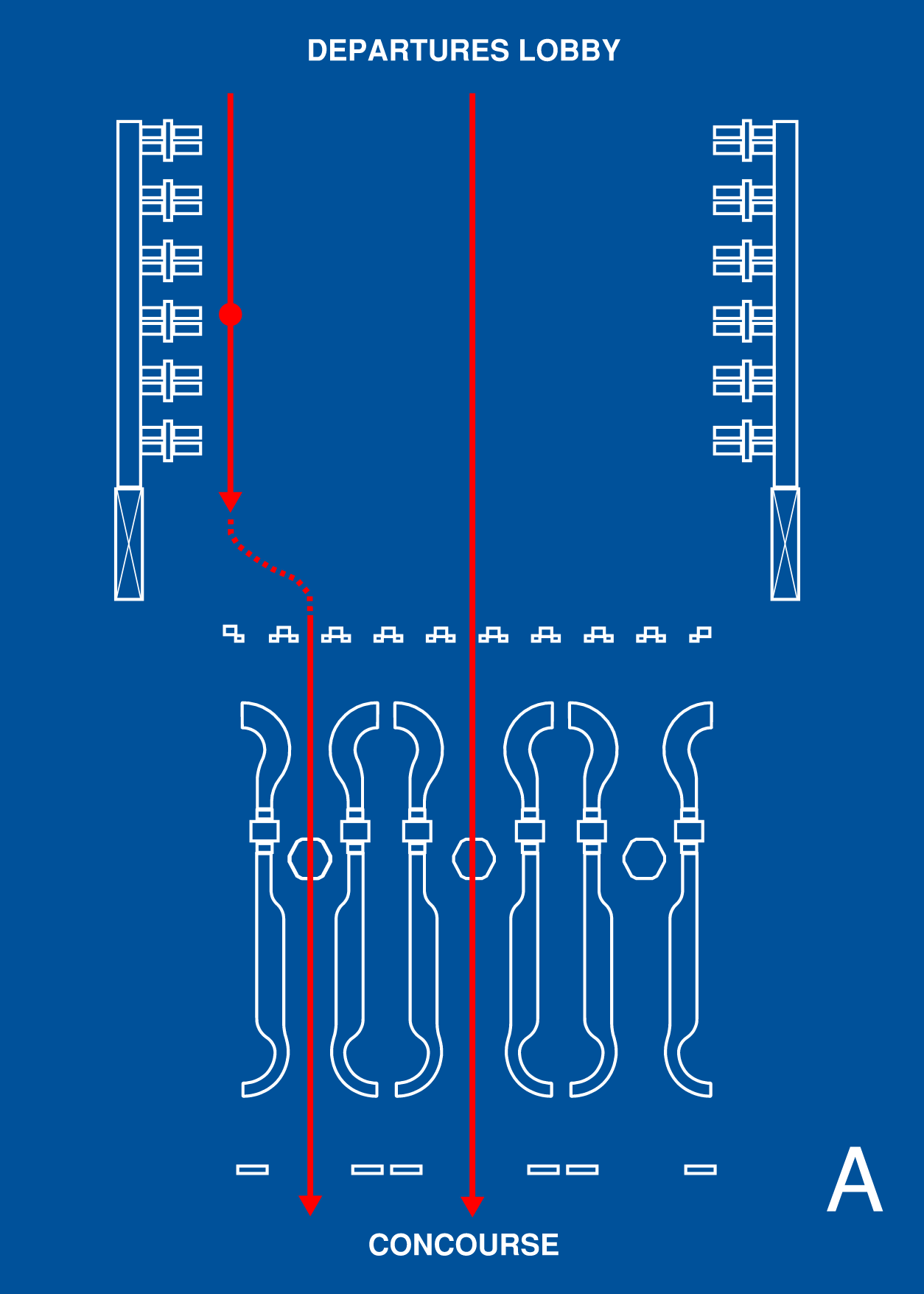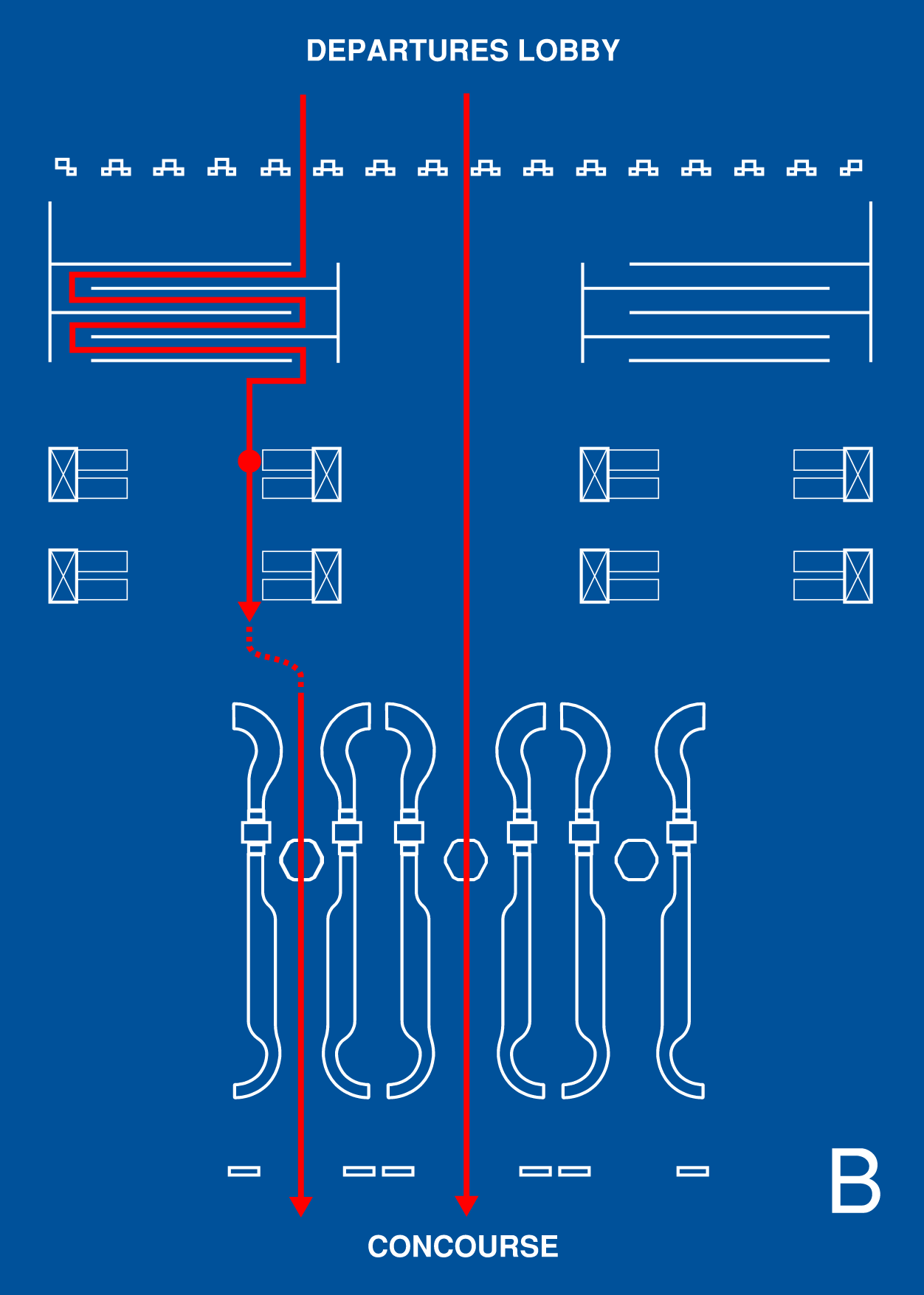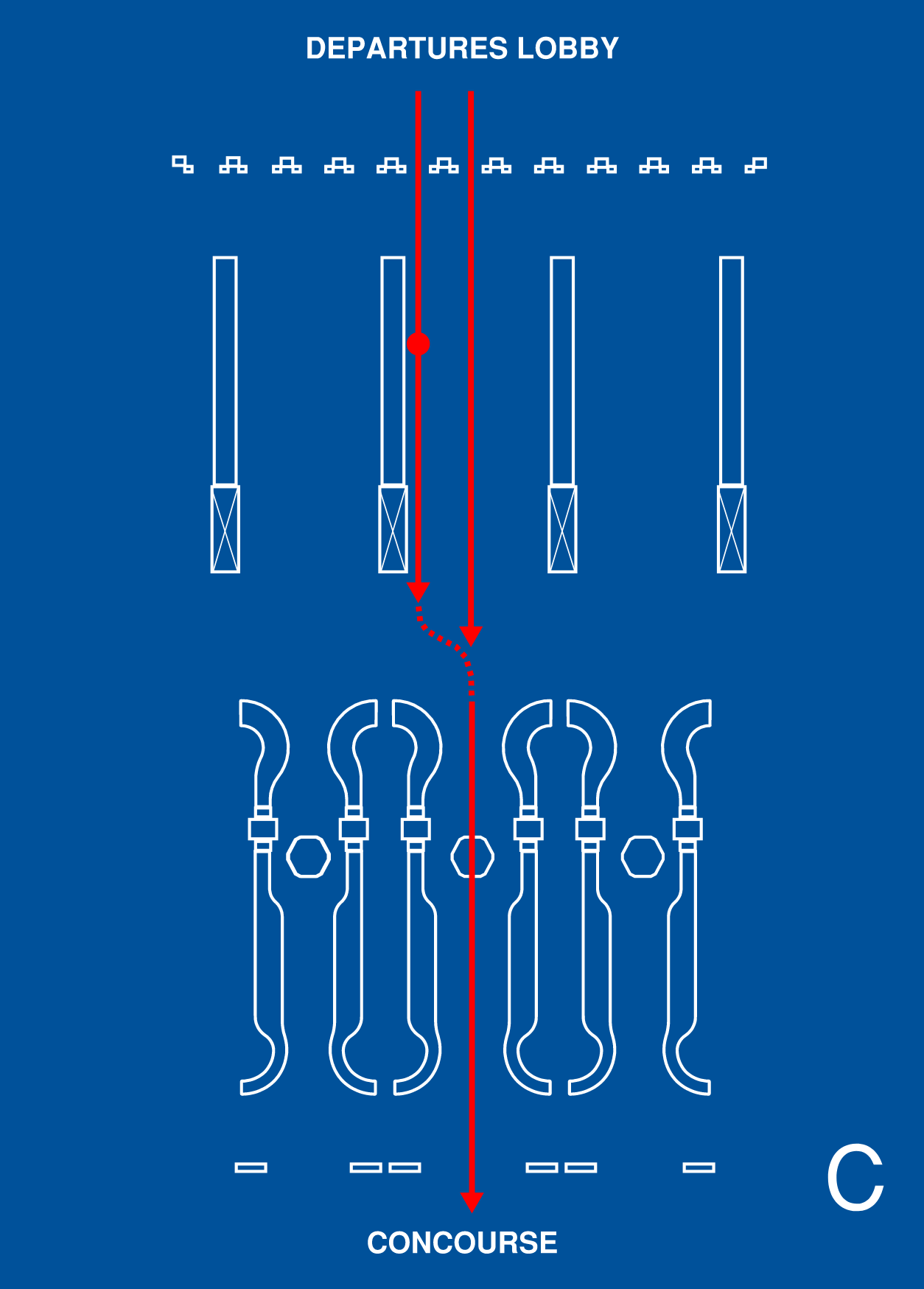In airports across the United States, bag-drop and the security checkpoint are the most persistent pain points for passengers. These processes are often stressful and unpredictable due to unknown wait times, staffing issues, and wayfinding challenges. Passengers encounter multiple touchpoints, queues, and agents as they navigate through these two disconnected processes. Furthermore, these processes require a significant amount of space within the terminal. Many aging airport facilities face limitations in their capacity to grow to meet rising passenger demand and larger equipment requirements. Consolidation of these processes offers airports the opportunity to enhance efficiency and provide passengers with an improved travel experience.
Emerging Technologies
Traditional check-in and security procedures heavily depend on physical agents and the manual verification of passenger credentials. However, these processes are changing due to emerging technologies and the widespread adoption of smartphones among passengers. Smartphones have facilitated remote check-in, digital identification, and real-time tracking of airport information such as queue durations and flight boarding updates. Biometrics and other emerging technologies can be leveraged to not only alleviate challenges encountered during the landside process, such as bag-drop and security, but also allow these two steps to be fused into one linear and touchless process. While these technologies are being implemented to an extent, bag-drop and the checkpoint remain disconnected, and the complexity in navigating the landside journey remains.
Various enabling technologies like biometric identity verification, virtual queuing, queue wait time technology, and selfbag drop systems are in use to some extent, but they have not fully streamlined the process of a combined bag-drop and security checkpoint. Biometrics provide the foundation for the streamlined process, allowing rapid identity confirmation without the need for a physical agent. A contactless process is made possible through the use of a digital drivers license stored on a passenger’s smartphone, which eliminates the need to hand off or insert a physical ID. Virtual queuing and queue wait time technologies aim to reduce waiting and eliminate the need for physical queues, while self-bag drop systems enhance efficiency regardless of staff availability. Together, these technologies can revolutionize the passenger experience within the pre-security terminal area of an airport.
Disconnected Emerging Technologies at Existing Terminals
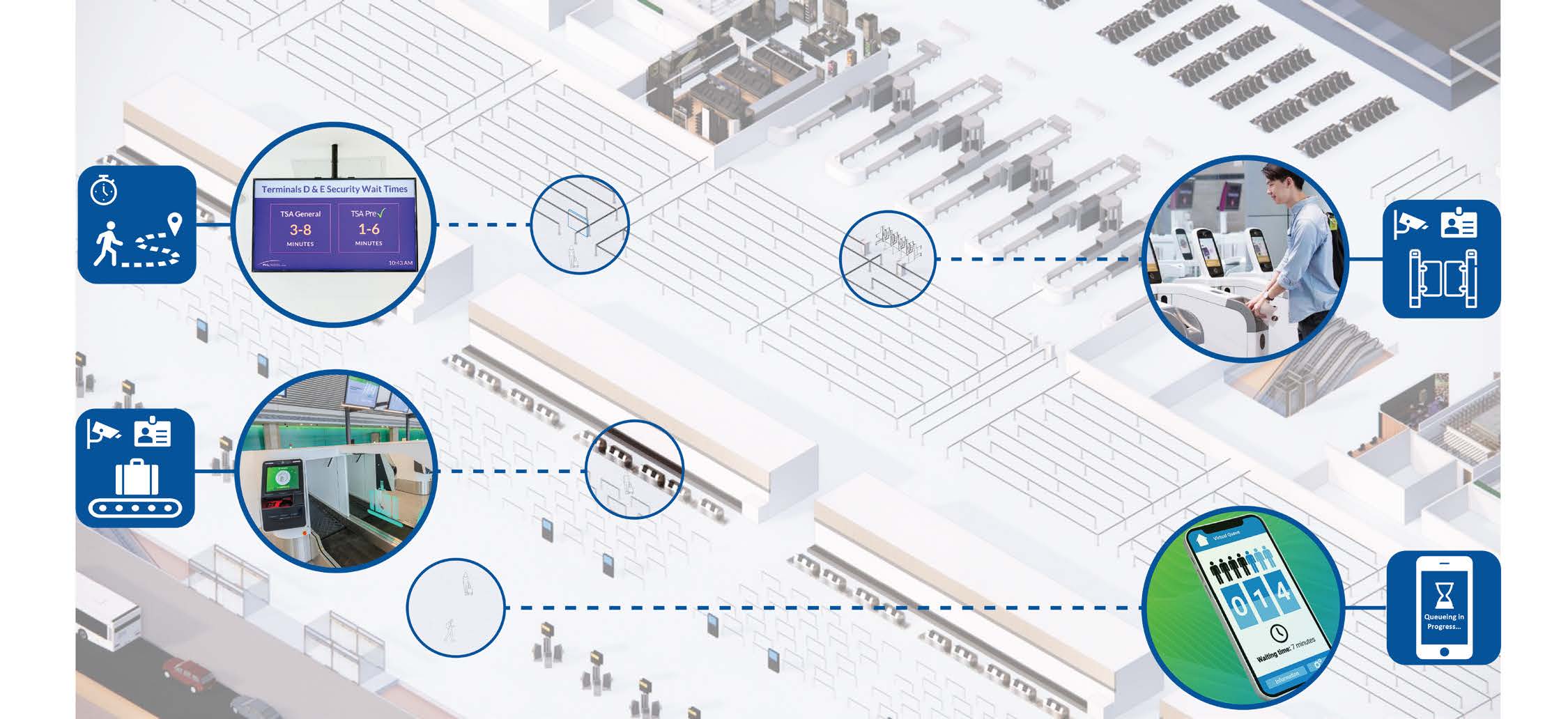
Source: Landrum & Brown, 2023.
Consolidating Landside Passenger Processing
Consolidating the bag-drop and the security checkpoint can provide more processing capacity within a limited landside footprint. This can help older airport terminals accommodate rising passenger demands, repurpose surplus landside space for traveler amenities or extra leasable areas. Transforming these processes into a continuous flow, with minimal wait times or queues, would enhance efficiency and improve the landside passenger experience.
For older airports struggling with capacity constraints, the strategic integration of these processes can allow them to effectively utilize their existing infrastructure to create a more streamlined and efficient landside experience. Not only does this maximize the use of available space but it also alleviates bottlenecks that often plague older airport facilities, enabling them to handle higher passenger volumes without the need for extensive physical expansion.
This cost-effective approach enhances operational capacity while improving the overall flow and satisfaction of passengers navigating through these older terminals. With reduced physical footprints, airports can strategically repurpose these areas for retail, dining, and other passenger amenities that not only add to the overall comfort of passengers but also contribute to the airport’s revenue stream. Three approaches to fusing the bag-drop and security process have been developed:
Approach A
Integrating automated bag-drop units into the former security queue areas is a more incremental approach to reducing friction at checkin. Queues at security would be minimized through queue tracking technology and virtual queuing. In Approach A, passengers would drop their bag at self-bag-drop units and then process through e-gates at the checkpoint, in lieu of traditional travel document checkers.
This approach would require two biometric checks but allows for more flexibility compared to Approach B and C. Existing terminals could more easily adopt this approach and reduce their overall space allocated to queuing, enabling areas to transition from dedicated queues and ticketing areas into passenger amenities or new leasable space, such asairline offices.
In this configuration, the Transportation Security Administration (TSA) could integrate their current canine screening process, and screen passengers both at bag-drop and as they approach the e-gates, further reducing the need for dedicated queue space. An essential element of this approach would be to provide enough self-bag-drop counters such that passengers do not have to wait in queues, this is possible because the process would no longer be airline agent limited.
In all these approaches there are variations to satisfy the need to tag checked baggage. Kiosks to print bag tags are still a viable approach and could be located prior to or after the e-gates. At-home printing and tagging or RFID permanent bag tags are other potential approaches that could be used in addition to airport printed bag-tags.
Approach B
Bag-drop can also be integrated with security, which could be accomplished by utilizing bag-drop elevators ne r the checkpoint. In Approach B, passengers would begin with a biometric e-gate, where authentication for bag-drop and security is completed in one step. The bag-drop elevator would be space efficient, eliminating the need for bag riser housings, they could also be integrated with a bag-tag printer, and be fully automated without airline agents.
Queue requirements would be minimal, enabling the bag-drop elevators to be located either nearby or on the path to the checkpoint entrance. This configuration creates a quasi-secure zone following the e-gates, which provides an additional layer security and allows passengers to freely drop their bags or enter the checkpoint without additional needs to authenticate their identity with an airline or TSA representative. The bag-drop elevators would give passengers time and a dedicated space to tag and self-drop their bags.
Approach C
Approach C would be revolutionary, by providing passengers with a fully frictionless experience from bag drop through security. The process would begin with an e-gate where a biometric camera matches passengers to their physical or digital drivers license. The e-gates would be categorized by airline, if necessary, or by passengers with and without checked baggage. Integrated bagtag printers would automatically recognize and print bag-tags as passenger biometrics are authenticated. As noted earlier, bag tags could also be printed at home or at kiosks located at the terminal entrance before the e-gates.
The e-gate, which is wide enough for checked baggage, opens into a series of open bag belts where passengers have space to tag their bag and drop checked bags as they walk toward the checkpoint. The linear bag belts would align with the security checkpoint lanes where they could begin divesting immediately. The checkpoint would not require a travel document checker because authentication would take place at the e-gates prior to the bag belts.
Passengers would have to schedule their arrival times or “slots” prior to travel This approach would utilize queue tracking technology and virtual queuing, to ensure that a minimal queue would be required and that the experience would be frictionless. Biometrics technologies allow for an open drop belt that doesn’t require agents to physically check identification. In this approach, e-gates authenticate passengers as the first step in processing, enabling a quasi-secure zone in the bag-drop and security area.
Transformation of Bag-drop and the Security Checkpoint
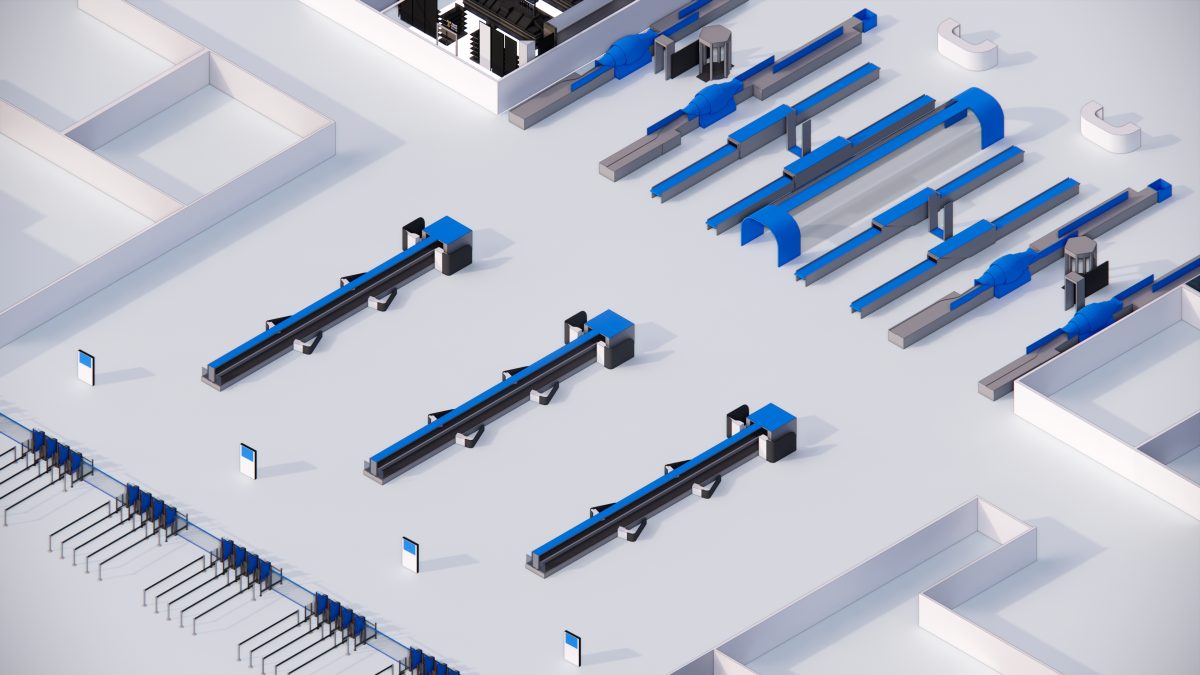
Source: Landrum & Brown, 2023.
Limitations to Approaches
When proposing biometric-based solutions, one of the first concerns that comes to mind is privacy. While there are already enrollment programs such as TSA Pre-Check and CLEAR that do maintain a biometric database, many passengers choose to opt out. This is why 1:1 authentication is still needed, it doesn’t require a biometric database, and simply performs the job that a human normally would, verifying that your face matches your ID.
The relocation of bag risers is not realistic for most existing airports and would require major infrastructure remodeling to align with the proposed approaches. Newly designed terminal facilities or terminal expansions could implement these approaches more easily because the bag system can be purpose built.
The ability to reduce queues at bag-drop is dependent on the number of bag-drop positions and the dependence on agent staff positions. In the same way than an array or pods of kiosks are deployed to reduce the amount of work performed by airline agents, there must be enough bag-drop to fully offset the need for agents and ensure there is never a party waiting for a bag-drop position to open.
Another operational constraint is staffing at the TSA checkpoint. Technologies such as queue wait time and virtual queuing can only go so far to mitigate checkpoint queues if TSA staffing is insufficient. The technology must ensure that passengers are arriving “just in time” for their scheduled queue position to maintain queues at a 5-minute wait or less, wait times exceeding 5-minutes would congest the proposed layouts.
Technology that enables standoff or ‘touchless’ detection of contraband at the checkpoint may enable a free flow or significantly increased throughput of passengers and their carry-on baggage through the screening process. While this ‘checkpoint of the future’ seems to always be 10 years away, this is the next step to achieving a frictionless passenger experience.
Until then, the checkpoint will be the most likely bottleneck in landside passenger processing.
Lastly, these approaches are highly dependent on the balance of processing capacity between the e-gates, bag-drops, and security lanes. If there are insufficient e-gates, queues will form in circulation areas, resulting in poor utilization and inefficiencies at the bag-drops and security. Similarly, too few bag-drops or security lanes will cause congestion and result in a bottleneck in the overall process.
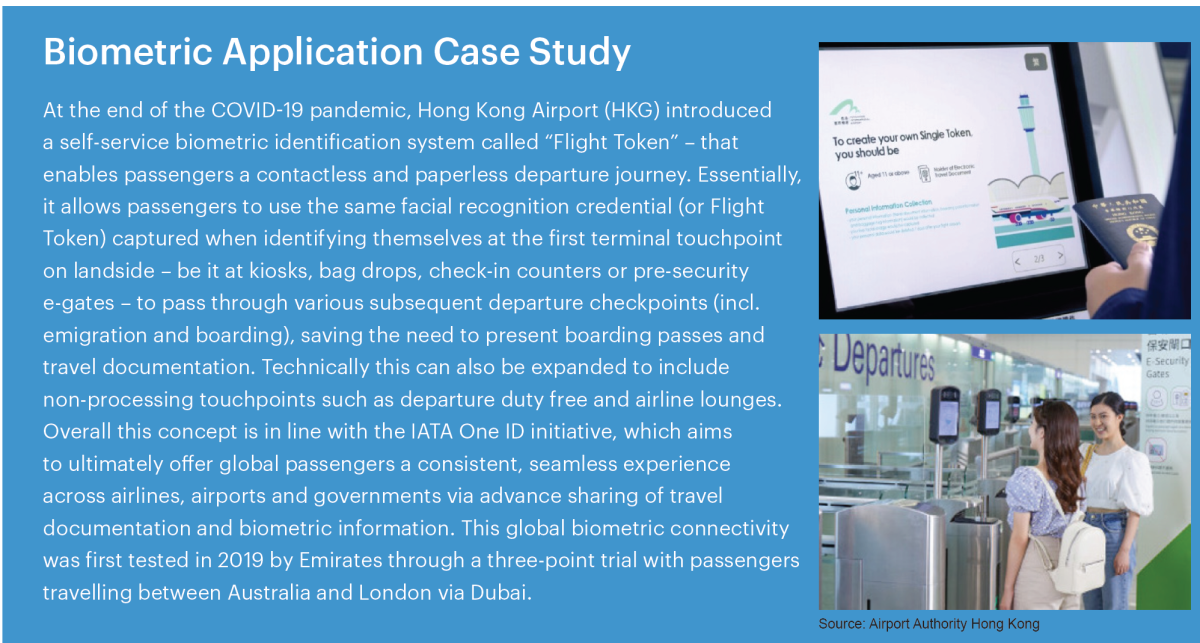
Final Thoughts
Within the dynamic and constantly evolving landscape of air travel, enhancing the passenger experience remains a top priority. Emerging technologies, including biometrics, virtual queuing, and self-bag drop systems provide opportunities to reprogram the DNA of the landside processor. By consolidating and streamlining these transaction points, airports can:
- reduce inconveniences for passengers,
- improve efficiency,
- increase revenue, and
- provide a more enjoyable experience for passengers.
While the concepts explored in this article were formulated primarily with the US airports in mind, many of the ideas presented are applicable for their international counterparts, including those that have already embraced the single biometric ID token concept (e.g. IATA OneID). This transformation is not only crucial for existing terminals to adapt to increasing demand but also provides opportunities for more efficient and passenger-centric designs in new facilities. The airport of the future will need to prioritize the passenger experience while also being even more operationally efficient.
What is the L&B LAB?
The LAB is Landrum & Brown’s research and development unit. Our mission is to harness decades worth of industry knowledge and expertise to develop innovative solutions that support our clients along with promoting industry thought leadership.
This document was prepared by Landrum & Brown, Inc. | Richard.Barone@landrumbrown.com
Sign up to receive our next L&B LAB in your inbox!

